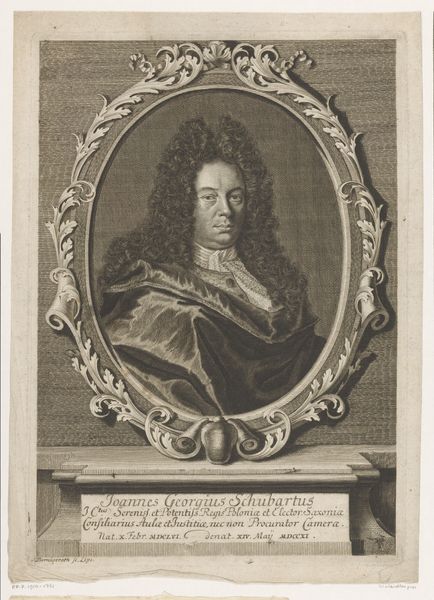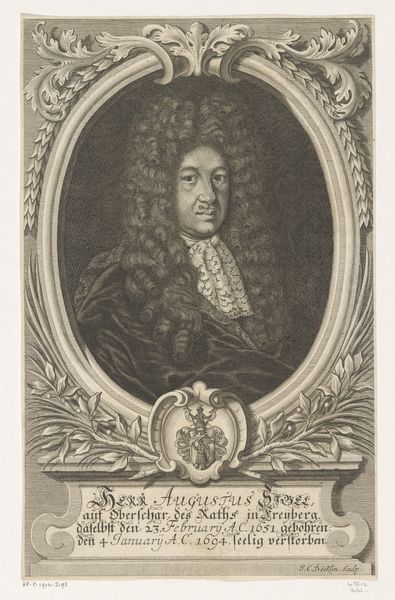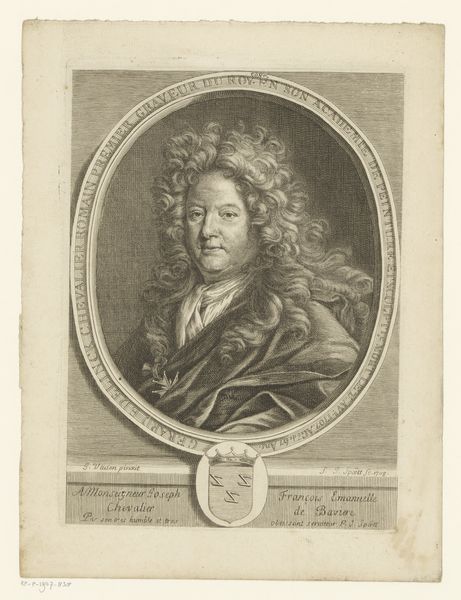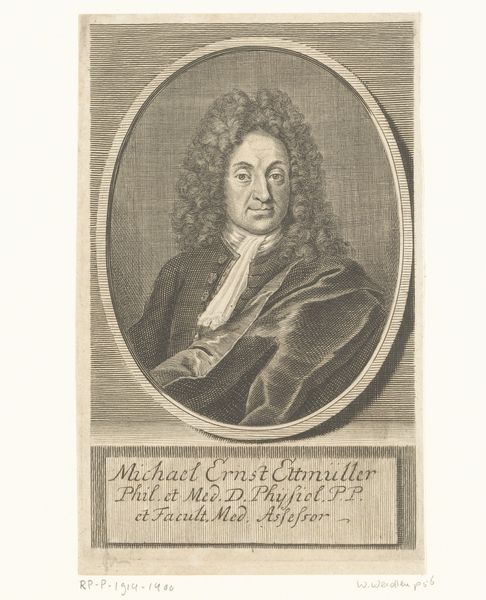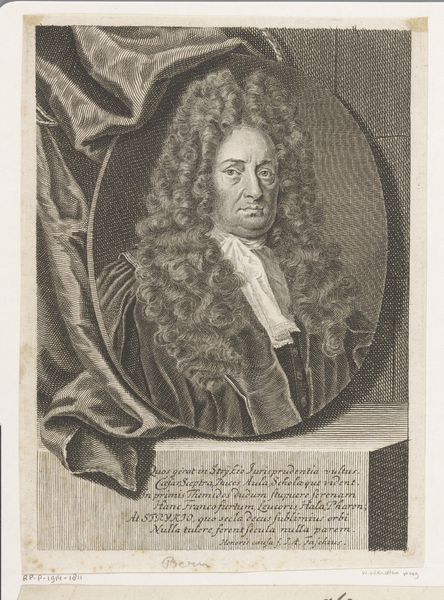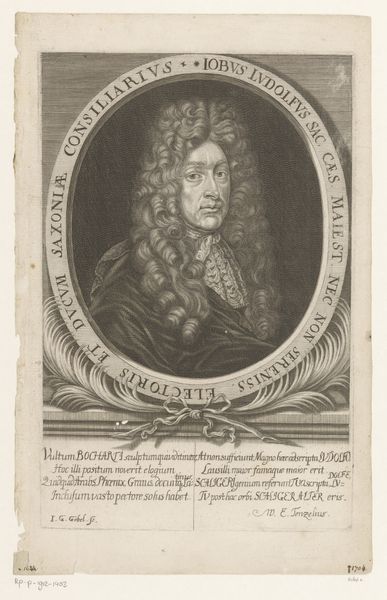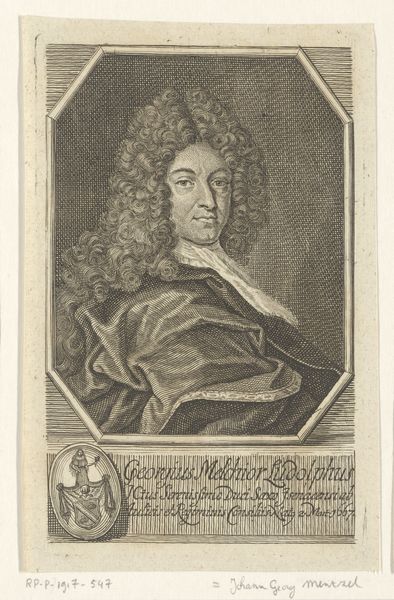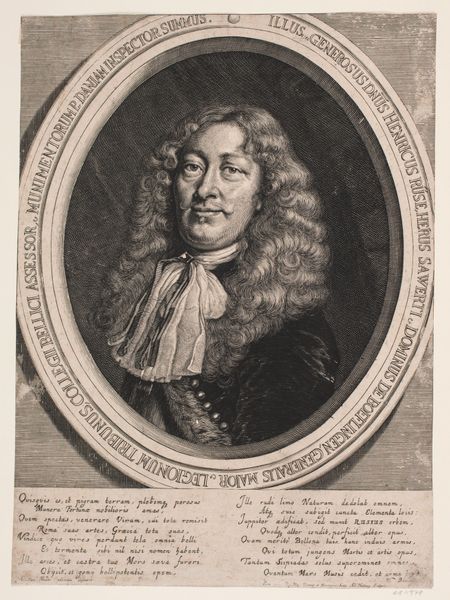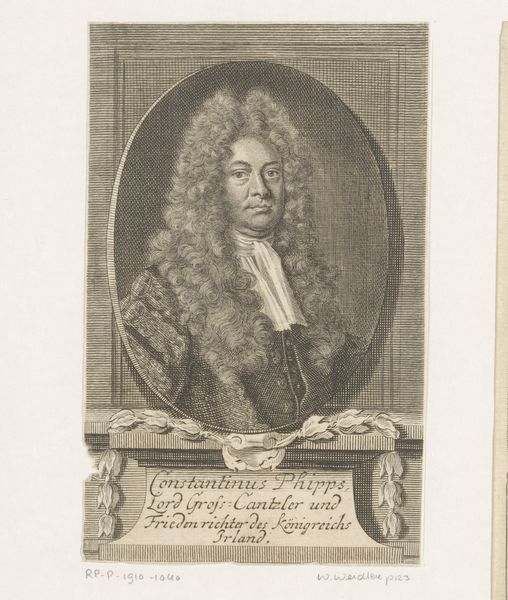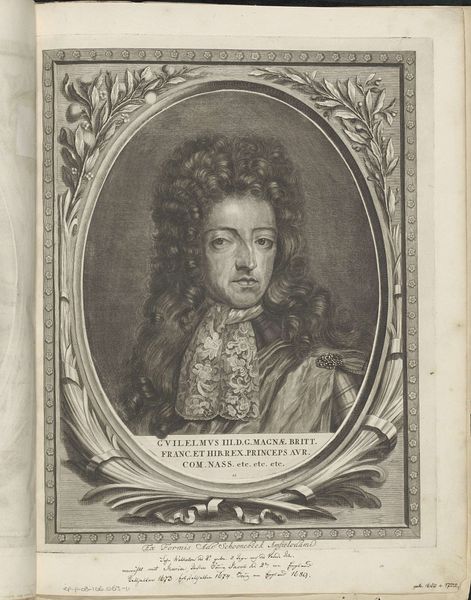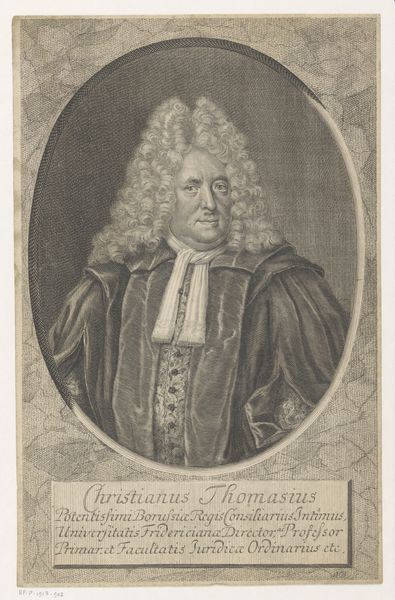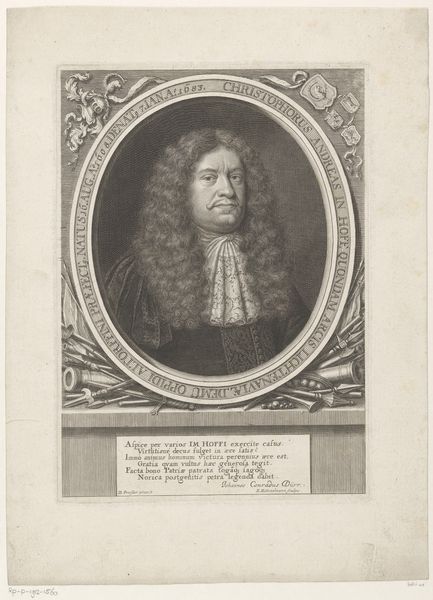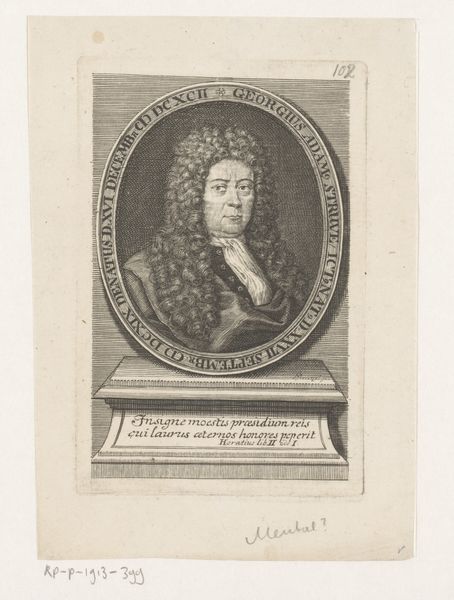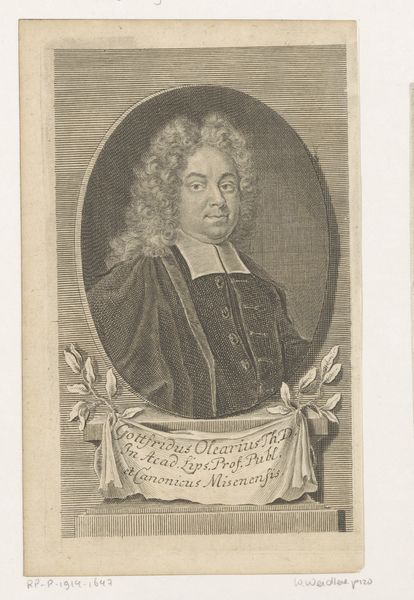
drawing, engraving
#
portrait
#
drawing
#
aged paper
#
toned paper
#
baroque
#
old engraving style
#
engraving
#
realism
Dimensions: height 196 mm, width 145 mm
Copyright: Rijks Museum: Open Domain
Editor: This engraving, "Portret van Samuel Stryk" by Martin Bernigeroth, dated 1703, presents a rather formal image. The use of toned paper gives it an antique feel. What can you tell me about this work? Curator: This print, an engraving, immediately signals a specific mode of production and distribution within the context of 18th-century society. The lines, meticulously etched, speak to a process demanding skilled labor. Think about who had access to commissioning such portraits and the means of their circulation. Editor: So, you are saying that it represents a particular type of consumerism and power? How so? Curator: Precisely. Engravings like these weren't just about likeness. They were about disseminating an image of authority and status. The quality of the paper, the intricacy of the engraving—all reflect resources. We should consider Bernigeroth's workshop, the economics behind it, and the market for such portraiture at the time. Can we separate the 'art' from the conditions that allowed it to be made and consumed? Editor: I see your point. It becomes less about the aesthetic value and more about the social and economic context of its creation and use. The means become the subject, in a way. Curator: Exactly! It’s about unveiling the social relations embedded in the materials and process. By focusing on these aspects, we disrupt traditional art historical narratives and give a fuller picture. Editor: Fascinating! I never thought about an engraving having such complex social layers to analyze. Curator: Art always has embedded complexities to explore! This approach lets us delve into art history from a radically different perspective, allowing a much more dynamic and informative cultural conversation.
Comments
No comments
Be the first to comment and join the conversation on the ultimate creative platform.
